- HOME
- Work Management
- The best Excel alternative for inventory management
The best Excel alternative for inventory management
- Last Updated : November 29, 2024
- 259 Views
- 5 Min Read
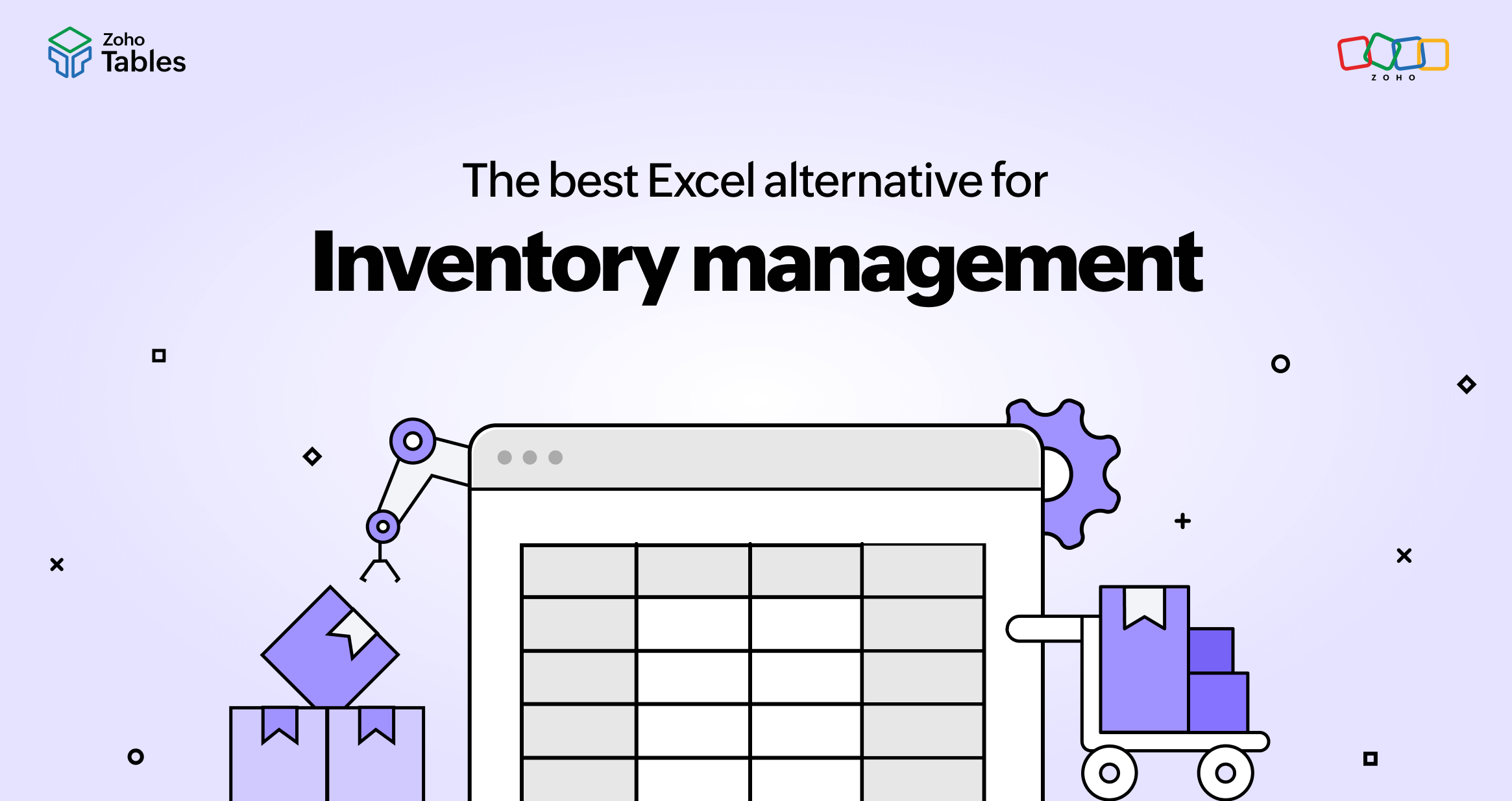
If you are a small or mid-sized business owner, your inventory management software should be both efficient and cost-effective. Instead of buying expensive software and using just a fraction of its features, an Excel sheet might seem like a simpler option to store your inventory data. It's customizable, cost-effective, and has many templates and tutorials online to get you started.
Despite its benefits, Excel also has a long list of shortcomings. In this post, we'll explore Excel's benefits, limitations, and a popular alternative for inventory management.
Benefits of using Excel for inventory management
Easy to learn
Excel has millions of users worldwide. There are books, videos, and even online certification courses to master Excel. The wide range of free and paid resources combined with a user-friendly grid interface makes Excel easy to learn. There are also inventory management templates available online, so you don't have to set up an inventory tracker from scratch.
Wide range of functions
Excel is popular for number crunching. When it comes to inventory management, there are handy functions like SUM to add values, SUMIF to calculate sums based on conditions, RANK to order items based on criteria, and VLOOKUP to perform search operations.
Cost-effective
Excel is part of the Microsoft Office Suite. If you purchase a one-time license, you can get lifetime access to Excel. You can also access the web version for free. This makes it an attractive tool for small businesses looking to manage their inventory.
Disadvantages of Excel
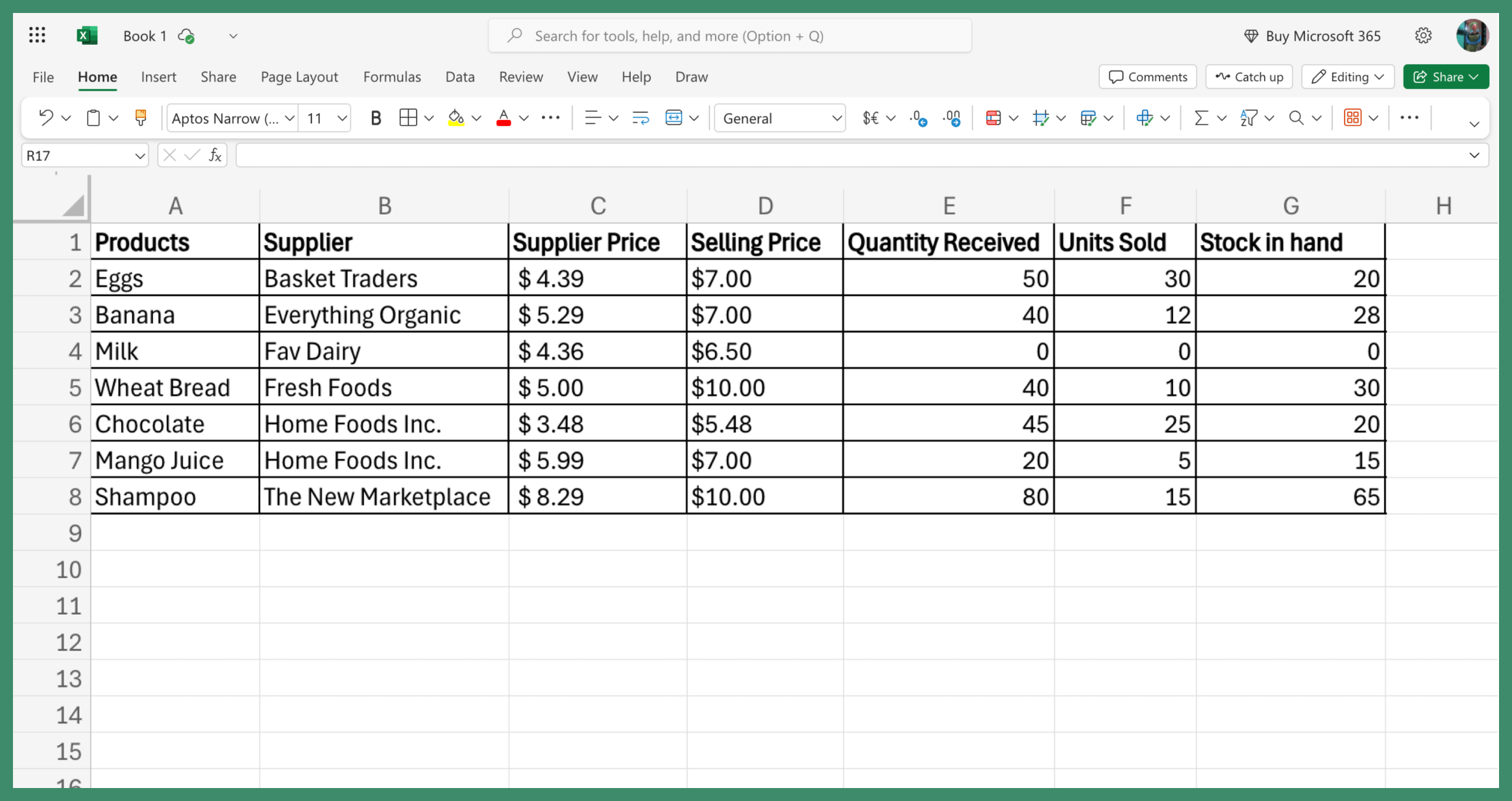
View restrictions
In Excel, you are restricted to a single grid view. You can only view basic charts, graphs, and diagrams based on your data. For advanced visualizations like kanban, calendar, and gallery, you have to rely on third-party tools. This isn't ideal when you want to visualize your invoice copies, track orders based on stages, or view your products in a gallery.
Outdated automation
When managing your inventory, you should be notified of low stocks, payments overdue, and slow-moving products. Excel doesn't have built-in automation to alert you via email or push notifications. You have to open your sheet manually and cross-check your data to stay updated. This wastes time and is prone to human error.
Version control issues
Collaboration is only possible in Excel's web version. When managing your inventory, you have to collaborate with suppliers, sales people, delivery people, and more. With Excel's limited collaboration capabilities, version control issues arise when multiple collaborators try to update data simultaneously. This leads to mismatch and data loss.
Manual data entry
As your business grows, your dataset increases, and it becomes tedious to update your inventory data manually. This leads to resource drain and data discrepancies.
No bi-directional relationships between sheets
An inventory management spreadsheet has multiple tabs like product details, sales data, order tracking, purchase details, supplier data, and more. You can't easily establish bi-directional relationships between these tabs. If you change data in the contact details of a supplier in the suppliers tab, it won't be reflected in the sales tab; you'd have to change data manually on both tabs.
Why Zoho Tables is a better alternative for managing your inventory
Zoho Tables is an easy-to-use work management tool that helps businesses organize data, collaborate contextually, and automate workflows. It combines the ease of a spreadsheet with the power of a database.
Simple interface
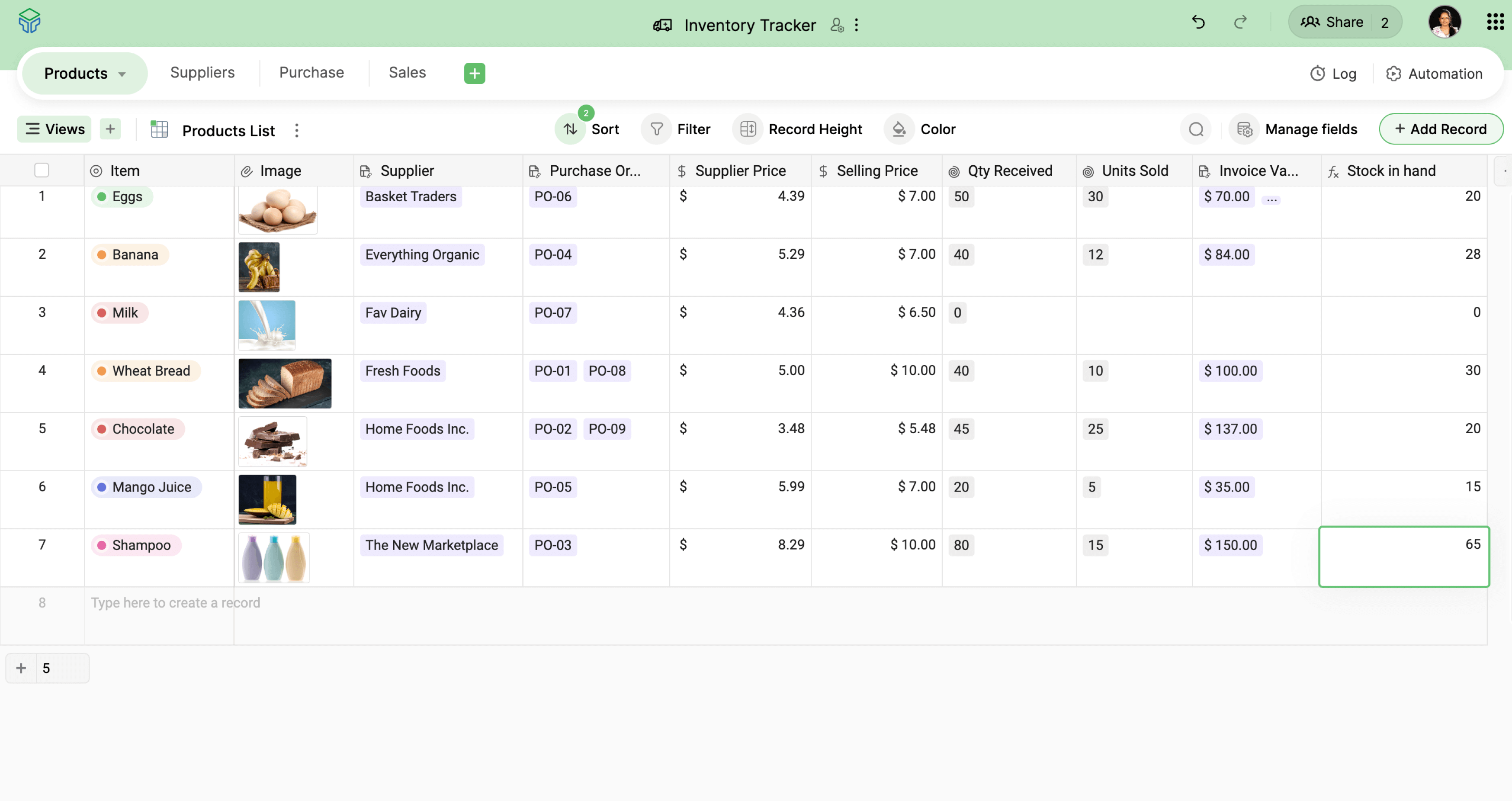
Zoho Tables has a familiar grid interface, which makes it easy for extensive spreadsheet users to adapt to Zoho Tables. It's easy on the eyes with colorful icons, adjustable grid size, and predefined data fields. Another standout feature is that you can choose the number of rows to display—if you have only 100 rows of data, you can display only that. This looks elegant compared to hundreds of empty rows and columns in Excel.
Bidirectional relationships between tables
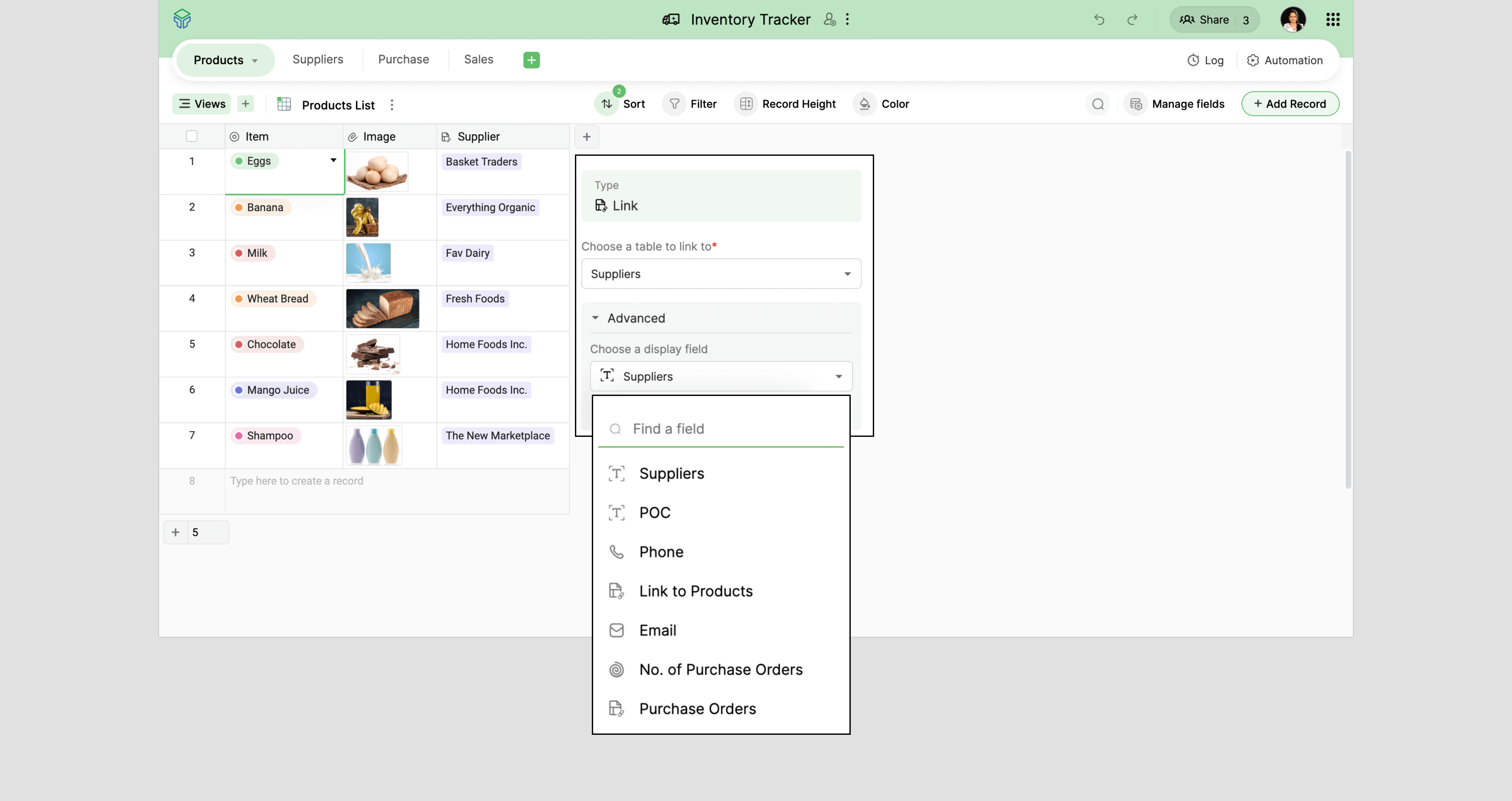
Zoho Tables has powerful relational database capabilities. Once you establish a link between two tables, you can view and edit data in any one table, and the change will be reflected on the other. This eliminates data duplication and data mismatch.
You can also look up data from linked tables. Instead of using complicated Excel functions like CHOOSECOLS, VLOOKUP and DGET, you can look up linked data from any table using the simple Lookup data field.
Powerful automation
You can set up automation with simple triggers and action logic to send emails and create and update records. For example, if you're running low on stock, you can automate an email to place an order with your supplier.

Advanced data visualizations
Along with the familiar grid view, Zoho Tables also offers kanban, calendar, and gallery views. This helps you interact with your data in meaningful ways.
You can use the gallery to get a bird's eye view of all your products or invoice copies.
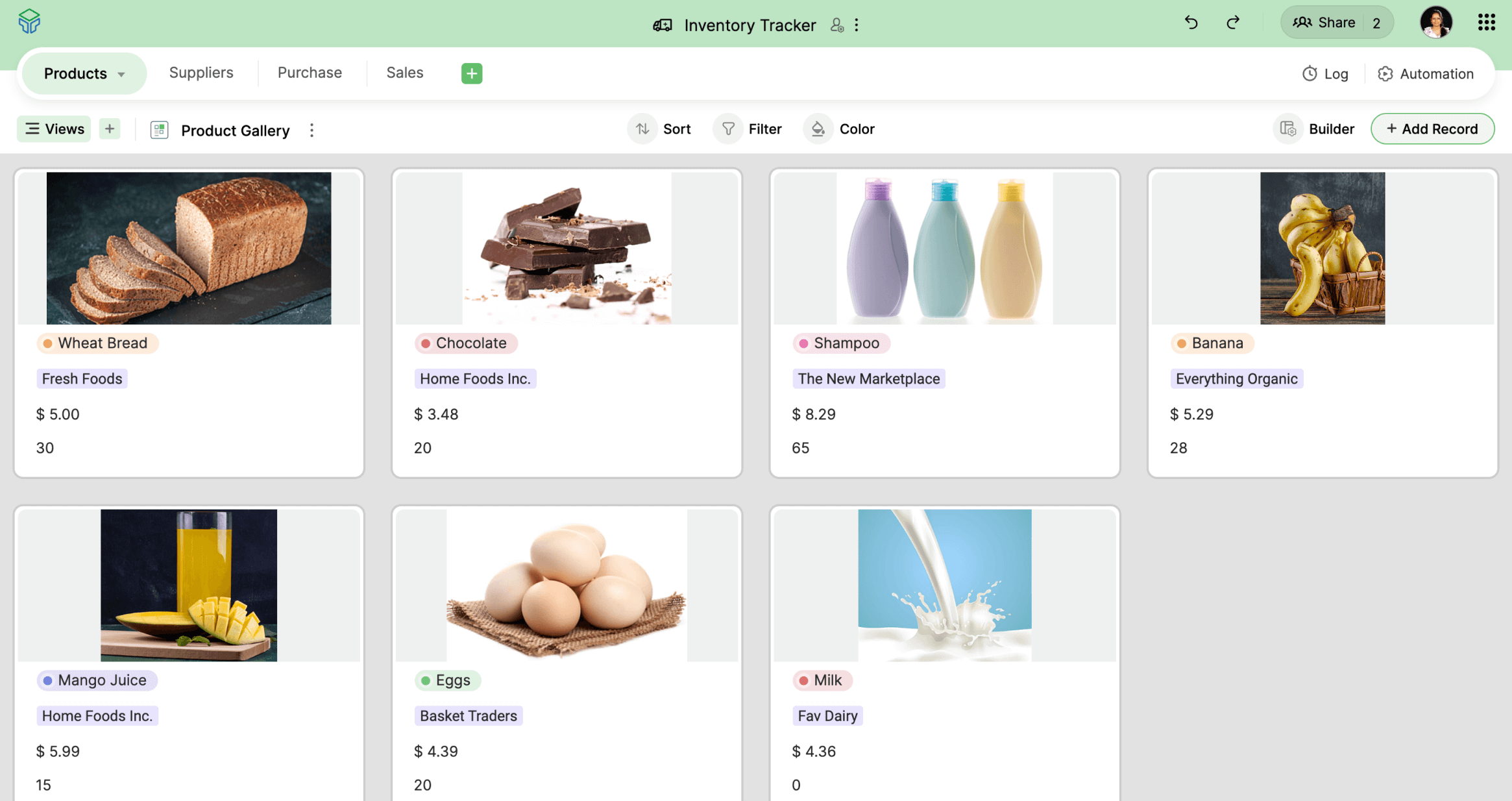
You can use the calendar view to see upcoming payments, order dates, shipment dates, and more. You can click on any date to see additional information.
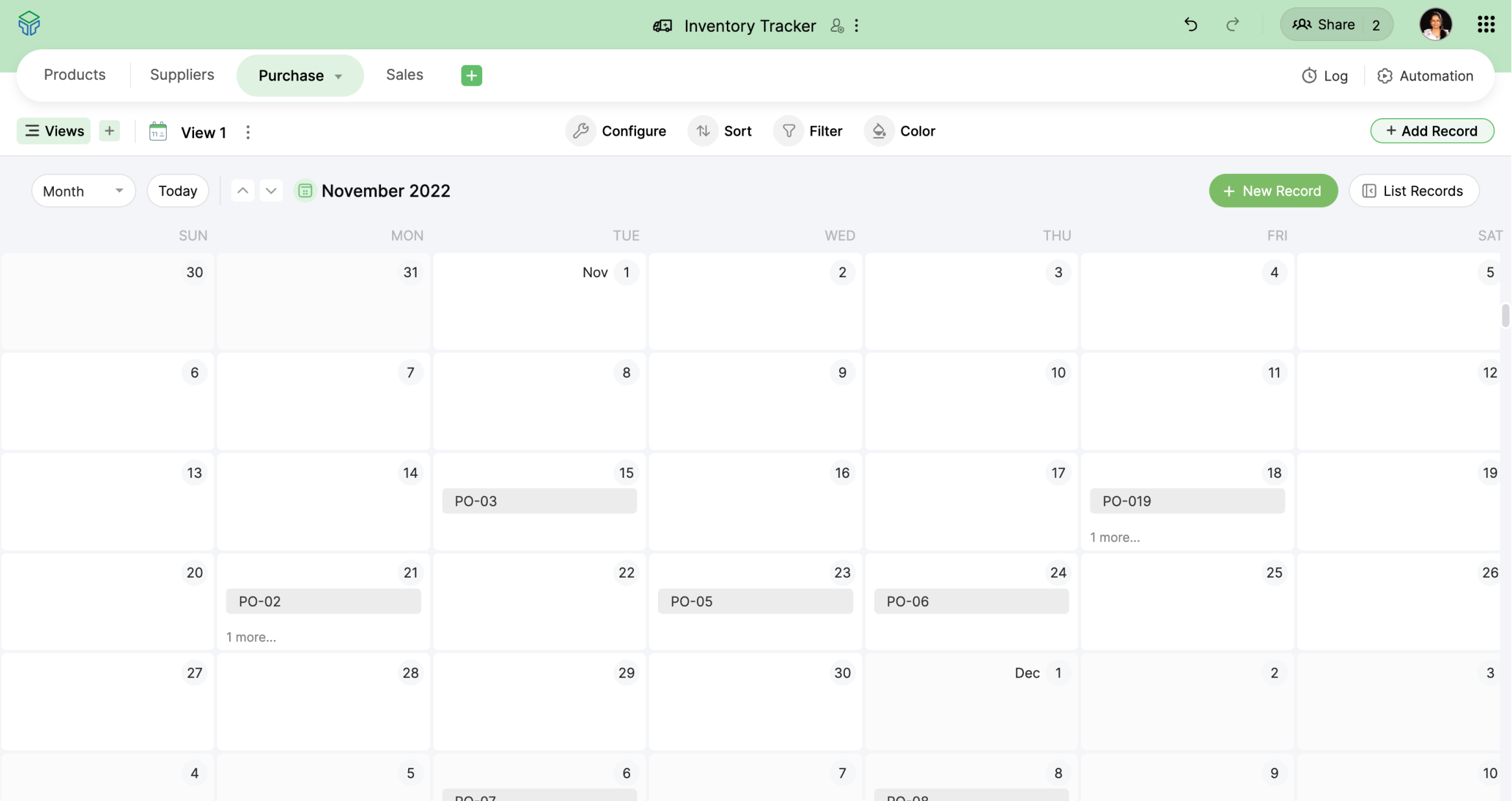
The kanban view saves time by giving you an overall picture of your shipment details. Using the card builder, you can choose which data to display, add new records, and simply drag and drop cards from one column to another to change order statuses.
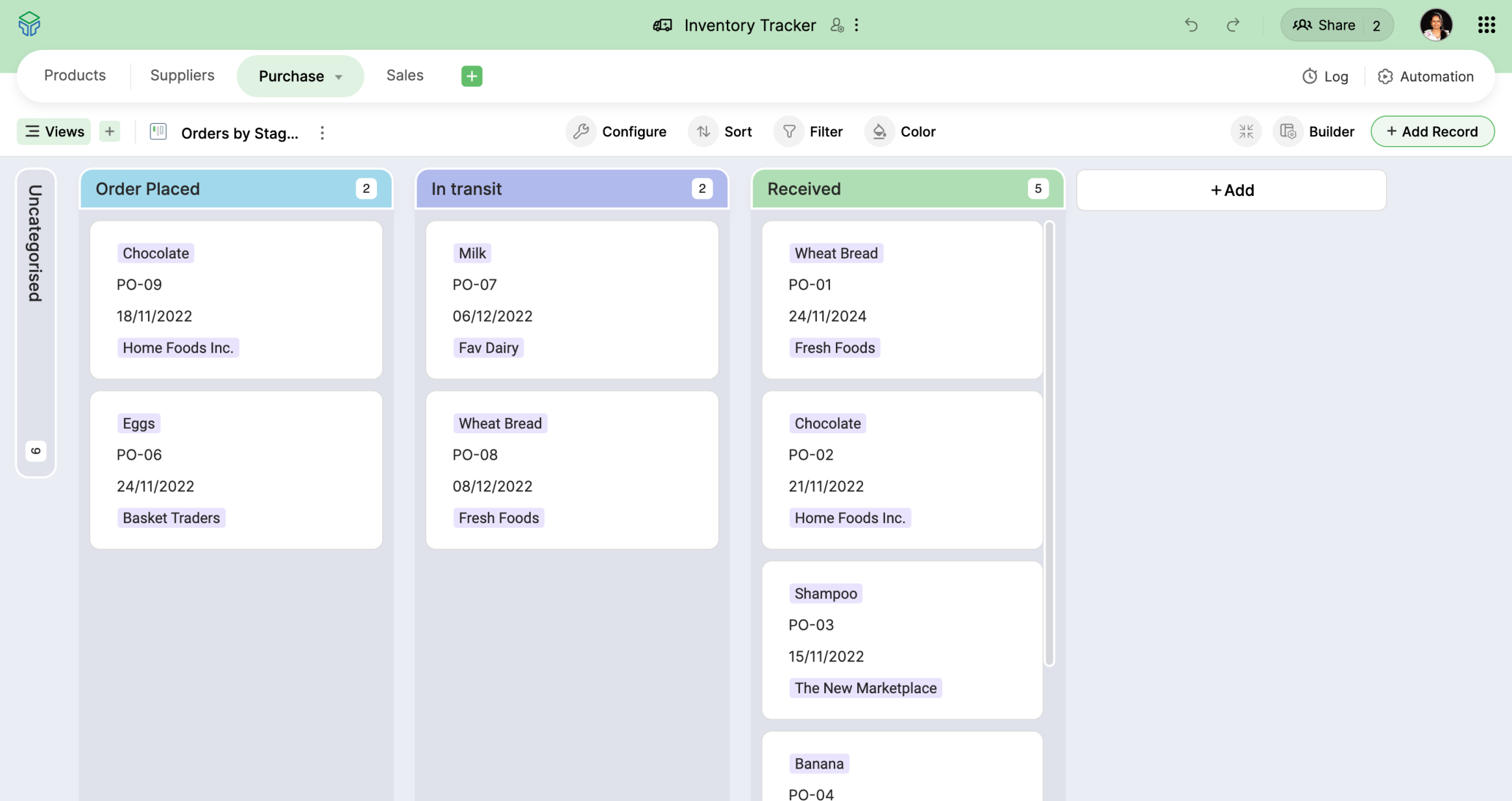
Access controls
You can collaborate with multiple people in real time without giving them access to all of the data. There are multiple access levels like manager, editor, data maintainer, commenter, and viewer. You can give access to the entire workspace, base, table, or a specific view.
Another major feature is the form view. You can easily create a form and share the link with others. When they submit their responses, data will be automatically added to the table, so you don't have to update it manually or share your table with others. You can achieve two goals at once: saving time by eliminating manual data entry and controlling access to your sensitive data.
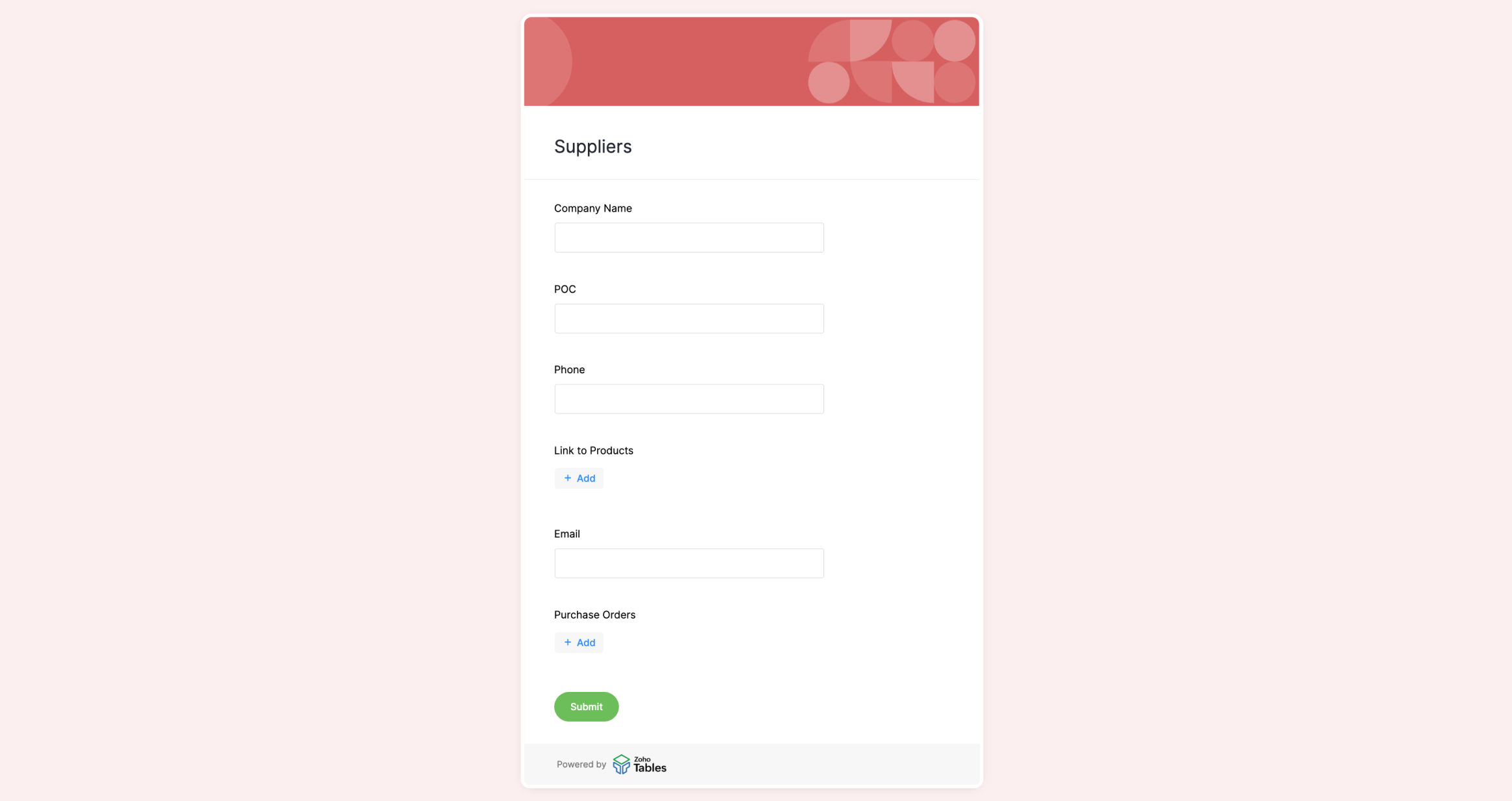
Migrate your data to Zoho Tables
When you run a small or mid-sized business, it is essential to manage your inventory effectively. It ensures that you meet your customer needs, avoid running out of stock or overstocking, and prevent supply chain breakdowns. Although Excel is a robust software, it's practical to switch from Excel to an intuitive software for inventory management.
It's easy to get started with Zoho Tables. You can import data from existing spreadsheets or use our inventory tracker template to set up your base.
 Archanaa
ArchanaaA fantasy writer who found a home in product marketing.

